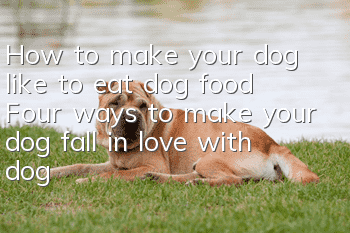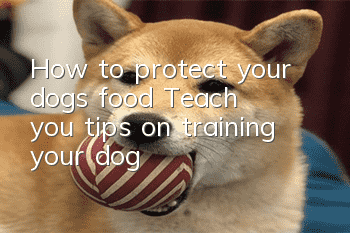Does your pet have separation anxiety? Let’s see if you have caught these symptoms!

Dogs have a close relationship with humans, and most dogs are very clingy. If possible, they would really like to stick to their owners, which also makes dogs prone to separation anxiety.
What is separation anxiety disorder?
The explanation on the encyclopedia is: Separation anxiety is an anxious or unpleasant emotional reaction caused by separation from an attachment object, also known as separation anxiety.
Infants and young children often cry and make fuss.
In fact, not only humans have this kind of emotional disorder, dogs also have it.
Due to an overly close relationship or the owner's doting on the dog, the dog becomes overly dependent on the owner.
As long as the owner cannot be seen or has a premonition that the owner is leaving, it will cause stress and then anxiety.
Separation anxiety in dogs is very similar to that in humans.
Dogs can’t talk, so they have to use behavior to express their anxiety.
The more obvious symptoms include:
Continuously licking and biting your own body or soles
Anorexia or loss of appetite
Drooling all the time
Chewing objects or constantly digging, scratching, tearing, and destroying
Continuous howling, barking, and whining
Use home training methods to relieve dog separation anxiety
1. Leave briefly and come back quickly before the dog starts to react or develop anxiety.
Then slowly extend the time, for example, leave briefly for 5 seconds at first, and then slowly extend it to 10 seconds or 15 seconds.
By leaving the dog for longer and longer periods of time, the dog gradually gets used to the fact that the owner will leave at any time.
2. When you leave, you can give it a leaky toy that smells but is not easy to eat. Put it away immediately when you get home.
Let it have a "beautiful" impression and connection every time you leave.
Note: Before preparing for these trainings, it is best to take the dog for a walk or do some indoor games to consume its energy.
Don’t say goodbye to your dog when you go out, and don’t say hello to your dog when you come home.
Don’t make every time you leave seem tense and grand.
3. Train the dog to stay alone and quietly in the cage - stay in the cage for 6-8 hours continuously
At the beginning, you can keep it in a cage and can see it at any timeYou are active at home.
Gradually lengthen the time. Go out once in a while and come back to let him gradually get used to being alone.
None of the above training can be successful overnight.
For many dogs who are timid, sensitive and overly dependent on their owners, it is not easy to learn to be alone.
If you don't pay attention for a moment, you will return to your original shape.
This requires the owner to invest more patience and time to correct it slowly.
- What should I do if my dog has lupus? Immune system diseases should not be underestimated
- Do dogs need deworming in summer? What should you pay attention to when raising dogs in summer?
- What should you pay attention to when vaccinating your dog? What should you pay attention to when vaccinating your dog?
- Symptoms of Rheumatism in Dogs What conditions can cause rheumatism in dogs?
- What to do if dogs fight at home? The owner is the best mediator
- What are the reasons why dogs are obese? Do you know these four reasons?
- The Disadvantages of Dogs Eating Leftovers Stop Feeding Your Dog Leftovers
- Symptoms of protein deficiency in dogs How to supplement protein
- How to treat pica in dogs? Have you seen your dog eating randomly?
- Why do dogs need their nails trimmed? Do you trim your dog’s nails?



